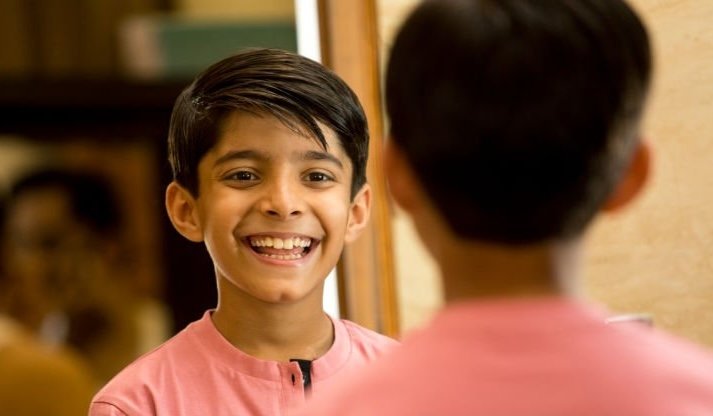It all began in 2016, when I was leading a needs assessment study for children in need of care and protection currently living in Institutions. The idea behind the needs assessment was to launch a Program catering to Emotional Health and Life skills needs of the children in need of care and protection living in Childcare Institutions.
There were several challenges in teaching Life Skills to the demography we were working with.
- Children typically became a part of the Childcare institutions only by the age of 10 years and there were several developmental and life skill milestones which they may have missed. For instance, we realised that many children could not hold their pencils in a three fingered grasp even at the age of 10 years.
- Around 25 to 30 percent of the children dropped out of the Institution after completing their basic primary education and even though we tried our best to continue our intervention with them in the form of Aftercare support, there were some who went away to rural areas where they started supporting their parents in earning livelihood. Therefore, there was a possibility that we may be working with the children for only about 3 to 4 years and hence the approach that we took had to account for this.
- The intervention we had with children primarily focussed on academics and we got around 6 hours with the child each week. We did not want to take away time from those sessions for life skills training. However, the current interventions we could find in the Indian context, are majorly implemented at school through standalone sessions and are not integrated to school curriculum.
Apart from these, as we went deeper into reviewing the existing Life skills approaches a couple of other challenges emerged.
Major challenges in Life Skills training approach
- Life-skills are widely divided according to their functionality, i.e. how they would help a person and not on learning pedagogy which makes it difficult for programme designers to know which Life-skill is best learnt through which strategy
- Sequence of learning life-skills, i.e. which life-skill can be learnt first in order to support learning for other life-skills is not clear
- There is limited research on how life-skills develop across age in a person. For example: Self awareness develops first as the ability to recognise self in mirror in an infant while in adults it goes upto reflection and ability to recognise one’s values
How we solved for the challenges specific to children in need of care and protection based at Childcare institutions is a topic for another day. If you want to know more about that do read my blog “Needs of children in Childcare Institutions”. In this post I am just going to focus on the general challenges In Life-skills training approach mentioned above.
What are Life Skills?
World Health Organization defines Life skills as “the abilities for adaptive and positive behaviour that enable individuals to deal effectively with demands and challenges of everyday life.” While UNICEF addresses them as “psychosocial and interpersonal skills that are generally can help people make informed decisions, communicate effectively and develop coping and self-management skills that may help them lead a healthy and productive life”
Life-skills are widely grouped into three broad categories:
- Cognitive skills for analysing and using information
- Personal skills for developing personal agency and managing self
- Inter-personal skills for communicating and interacting effectively with others.
Both WHO and UNICEF talk about life-skills from a functionality perspective and as we can see the segregation of these skills are also done on the basis of how they would be functional for an individual which is one of the challenges I mentioned above.
Current scenario in Life-skills Intervention design
In Life-skills intervention design currently the following steps are widely adopted.
- Lifeskills is used as a methodology not just to address issues of development but in other thematic areas as well – such as health seeking behavior, prevention of HIV and AIDS, human rights education and prevention of violence against children.
- Furthermore teaching and learning resources such as charts, pictures, magazines, newsletters, videos etc are produced and are easily accessible. Teaching strategies such as debates, discussions, story-telling, case studies, use of art and use of sports have also been widely discussed and utilised.
- The flow of behaviour change which occurs while learning Life-skills has been researched on

We often think that knowledge is just input of information but it is much more than that. Think of knowledge as a map of the world we build inside our brains, like a physical map it helps us recall where things are but it contains more than that. It also contains our contextual beliefs and expectations too – “If I do this, I will probably get that”. Crucially, the brain links all of these together into a giant network of ideas, memories, predictions etc. It is from this “map” that we base our decisions. Our brain continuously updates this map based on signals we receive.
Attitude change occurs when we Abstract from the knowledge: Generalizing our insights
Behaviour change occurs due to Absorption: Applying the insights to different situations
And Diffusion starts when we practice the skill: Sharing the new insights with others
Before we delve into the sequential Life Skills training approach, I wanted to discuss a little bit on the theory of where I had derived the idea from. As I read further into the Behavior change aspects of Life Skills began to get curious about knowledge, its types and how it is transferred and that led me to start reading on Knowledge Management practices which derive a lot from Constructivist Approach to learning. So in the next couple of paragraphs I am taking a detour and trying to summarise some of the Knowledge Management practices and approaches I got inspired from. These are directly relevant to the Life Skills approach I will talk about later
How is Knowledge transferred
Types of Knowledge
According to Knowledge Management theorists, there are three types of knowledge in an organization. They are – Explicit, Tacit and Embedded.

Explicit knowledge is one which can be codified and communicated with ease. It is also known as “Know What”. Databases, memos, notes and documents are ways of storing explicit knowledge
Tacit knowledge on the other hand is hard to articulate and codify. This may be because of complexity, non-measurability or subtlety. For example: Riding a Bicycle or in an Organizational context: Time taken by a seasoned professional to troubleshoot an issue often takes lesser than a less experienced one. Tacit knowledge is transferred by Observation, Socialization, Mentoring etc.
Embedded knowledge is the third form of knowledge which can be seen in processes, routines, culture of an organization. It is important to note, that while embedded knowledge can exist in explicit sources or can be codified (i.e. a rule can be written in a manual), the knowledge itself is not explicit, i.e. it is not immediately apparent why doing something this way is beneficial to the organization.
The knowledge spiral

How do these different forms of knowledge interplay? To understand this clearly we can look at the Knowledge spiral. The spiral explains how and through which means Tacit to Explicit knowledge and vice versa is transferred.
Although recent research talks about how the Knowledge spiral is more complex than this earlier model, however the relationship between Tacit and Explicit Knowledge still holds true. Embedded knowledge as per theorists need to be deconstructed and mapped in order to be made explicit.
Sequential Life-skills Approach

So here is the sequential Life-skills approach. The approach tries to explain the flow of learning life-skills and also the way in which they are best learnt.
It is inspired by Maslow’s Hierarchy of needs pyramid with the first level of life-skills at the bottom and consequent levels above. The topmost triangle shows what we aim to achieve/ or the outcomes in terms of emotional well-being for the child.
The first level contains life-skills which can be codified and learnt in a step by step, systematic manner. For example: Self awareness the first level can be learnt through the Johari Window – thinking about own skills, receiving feedback from others, revealing self to others. Confidence can be learnt through courage to try new skills, practice to make the skill better. Creative thinking can be learned by learning tools like brainstorming, lateral thinking, SCAMPER, reversal (reading material on these is linked under References below) etc.
The second layer is more complex tacit skills which are learnt through observation, socialization etc. While the third level which is derived from both the first two levels, is again explicit or codifiable.
In addition to the above there are enablers associated with the approach. These are:
- Motivation is the driver behind a child/ person to learn all these or go through the stages. And what makes them motivated is both extrinsic and intrinsic factors. I have a separate post on “Motivating Children” in case you are interested to know more about it.
- A basic hygiene factor enabling Life Skills training is “Care” and “Safe Space”. These enable a child to be motivated and go ahead in the sequence.
Usability of the approach
In conclusion, I would like to talk about the usability of the approach. Firstly, The approach can serve as a base for designing and integrating life skills intervention along with academic support. For example: Components like codified life-skills can be taught to the children through modules in separate sessions while tacit life-skills need to be exhibited and transferred through dialogues, peer discussions, reflection activities by facilitators and adults. Therefore, these can easily be integrated as a basic approach while teaching any other academic or non-academic session.
Secondly, as we gain clarity on the life-skills which serve as building blocks for other life-skills and levels within specific life-skills themselves it makes it easier to design age appropriate interventions through time.
Finally, the enablers of Care, Safe Space and Motivation can also be integrated in the holistic model of any intervention with children.
————————————————————————————————————————-
At the end of the post I would like to express that my ideas on this are also evolving currently and although I have been able to talk about the “What” and “When” of Life Skills training, the how of transferring tacit knowledge around Life Skills is something I am still exploring. Some approaches like Communities of Practice are especially interesting and I am reading up on those currently. If any of you have any ideas to contribute towards this, I would be glad to have a discussion and learn from you.
————————————————————————————————————————–
References
https://www.unodc.org/pdf/youthnet/action/message/escap_peers_07.pdf
https://www.unicef.org/lifeskills
http://www.infogineering.net/data-information-knowledge.htm
https://coollmax.blogspot.in/2013/06/knowledge-management-strategy.html
http://www.knowledge-management-tools.net/different-types-of-knowledge.html
https://stocklogos.com/topic/creative-thinking-methods-and-techniques



